List of emperors of Japan facts for kids
Japan has been ruled by emperors since ancient times. The earliest emperors and their dates are mostly known from an 8th-century book called Nihon Shoki. This book was written to make the Yamato dynasty seem older and more important, claiming it started in 660 BCE. Historians aren't sure who the very first Japanese ruler was. Some believe it might have been Emperor Yūryaku (who ruled from 456–479) or Emperor Kinmei (who ruled from 539–571), among others.
The titles Tennō (meaning 'Emperor') and Nihon (meaning 'Japan') were first used in the late 600s CE. Japan uses a special calendar system called nengō. In this system, years are counted from the start of a new era, which usually begins when a new emperor takes the throne. This system has been used since the late 600s.
Contents
Who Were Japan's Early Emperors?
The emperors of Japan have a very long history. Many of the earliest emperors are considered legendary, meaning their stories are passed down but might not be fully true. However, they are still important figures in Japanese history and culture.
Legendary Emperors (660 BC – 506 AD)
These emperors are mostly known from ancient stories and records. Their exact lives and reigns are not fully confirmed by other historical evidence.
| No. | Portrait | Posthumous name | Reign | Key Facts |
|---|---|---|---|---|
| 1 |  |
Emperor Jimmu 神武天皇 |
660–585 BC (75 years) |
Son of a kami (spirit or deity). He was believed to be a descendant of the sun goddess, Amaterasu. He won the Eastern Expedition to become emperor. He is considered legendary. |
| 2 | 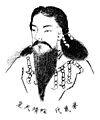 |
Emperor Suizei 綏靖天皇 |
581–549 BC (32 years) |
Son of Emperor Jimmu. Also considered legendary. |
| 3 | 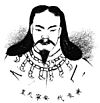 |
Emperor Annei 安寧天皇 |
549–511 BC (37 years) |
Son of Emperor Suizei. Considered legendary. |
| 4 | 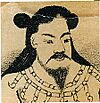 |
Emperor Itoku 懿徳天皇 |
510–477 BC (33 years) |
Son of Emperor Annei. Considered legendary. |
| 5 | 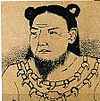 |
Emperor Kōshō 孝昭天皇 |
475–393 BC (82 years) |
Son of Emperor Itoku. Considered legendary. |
| 6 | 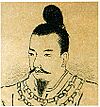 |
Emperor Kōan 孝安天皇 |
392–291 BC (101 years) |
Son of Emperor Kōshō. Considered legendary. |
| 7 | 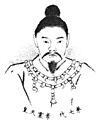 |
Emperor Kōrei 孝霊天皇 |
290–215 BC (75 years) |
Son of Emperor Kōan. Considered legendary. |
| 8 | 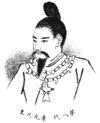 |
Emperor Kōgen 孝元天皇 |
214–158 BC (56 years) |
Son of Emperor Kōrei. Considered legendary. |
| 9 |  |
Emperor Kaika 開化天皇 |
157–98 BC (59 years) |
Son of Emperor Kōgen. Considered legendary. |
| 10 |  |
Emperor Sujin 崇神天皇 |
97–30 BC (67 years) |
The first emperor who might have actually existed, though still largely legendary. |
| 11 |  |
Emperor Suinin 垂仁天皇 |
29 BC–AD 70 (99 years) |
Son of Emperor Sujin. Considered legendary. |
| 12 |  |
Emperor Keikō 景行天皇 |
71–130 (59 years) |
Son of Emperor Suinin. Considered legendary. |
| 13 | 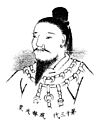 |
Emperor Seimu 成務天皇 |
131–190 (59 years) |
Son of Emperor Keikō. Considered legendary. |
| 14 | 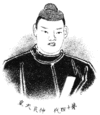 |
Emperor Chūai 仲哀天皇 |
192–200 (8 years) |
Grandson of Emperor Keikō. He was the first emperor not to be the son of the previous one. He died during a fight against the Kumaso tribe. Considered legendary. |
| – |  |
Empress Jingū 神功皇后 |
201–269 (68 years) |
Wife of Emperor Chūai and mother of Emperor Ōjin. She ruled as a regent (someone who governs for a child ruler). She is not officially counted as an empress. Considered legendary. |
| 15 | 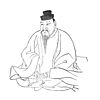 |
Emperor Ōjin 応神天皇 |
270–310 (40 years) |
Son of Emperor Chūai and Empress Jingū. He was later honored as a god in Shinto and Buddhism in Japan called Hachiman. Considered legendary. |
| 16 |  |
Emperor Nintoku 仁徳天皇 |
313–399 (86 years) |
Son of Emperor Ōjin. Considered legendary. |
| 17 |  |
Emperor Richū 履中天皇 |
400–405 (5 years) |
Son of Emperor Nintoku. Considered legendary. |
| 18 | 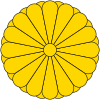 |
Emperor Hanzei 反正天皇 |
406–410 (5 years) |
Son of Emperor Nintoku and younger brother of Emperor Richū. Considered legendary. |
| 19 | 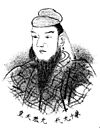 |
Emperor Ingyō 允恭天皇 |
411–453 (42 years) |
Son of Emperor Nintoku and younger brother of Emperor Richū and Emperor Hanzei. Considered legendary. |
| 20 |  |
Emperor Ankō 安康天皇 |
453–456 (3 years) |
Son of Emperor Ingyō. He was killed by Prince Mayowa. Considered legendary. |
| 21 |  |
Emperor Yūryaku 雄略天皇 |
456–479 (23 years) |
Son of Emperor Ingyō and younger brother of Emperor Ankō. Considered legendary. |
| 22 | 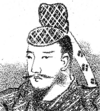 |
Emperor Seinei 清寧天皇 |
480–484 (4 years) |
Son of Emperor Yūryaku. Considered legendary. |
| 23 |  |
Emperor Kenzō 顕宗天皇 |
485–487 (2 years) |
Grandson of Emperor Richū. He was also the cousin and adopted son of Emperor Seinei. Considered legendary. |
| 24 | 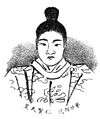 |
Emperor Ninken 仁賢天皇 |
488–498 (10 years) |
Grandson of Emperor Richū. He was the cousin and adopted son of Emperor Seinei, and older brother of Emperor Kenzō. Considered legendary. |
| 25 |  |
Emperor Buretsu 武烈天皇 |
499–506 (7 years) |
Son of Emperor Ninken. Considered legendary. |
First Historically Confirmed Emperors (507 AD – 781 AD)
These emperors are the first ones whose existence is supported by more historical evidence beyond just ancient stories.
| No. | Portrait | Posthumous name | Reign | Key Facts |
|---|---|---|---|---|
| 26 | 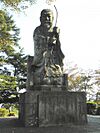 |
Emperor Keitai 継体天皇 |
507–531 (24 years) |
A distant descendant of Emperor Ōjin. He became emperor after being suggested by Ōtomo no Kanamura. He might have started a new ruling family line. |
| 27 |  |
Emperor Ankan 安閑天皇 |
534–535 (1 year) |
Son of Emperor Keitai. |
| 28 |  |
Emperor Senka 宣化天皇 |
536–539 (3 years) |
Son of Emperor Keitai and younger brother of Emperor Ankan. |
| 29 |  |
Emperor Kinmei 欽明天皇 |
540–571 (31 years) |
Son of Emperor Keitai and younger brother of Emperor Ankan and Emperor Senka. He is considered the first emperor whose rule is truly confirmed by history. |
| 30 |  |
Emperor Bidatsu 敏達天皇 |
572–585 (13 years) |
Son of Emperor Kinmei. |
| 31 |  |
Emperor Yōmei 用明天皇 |
586–587 (1 year) |
Son of Emperor Kinmei and half-brother of Emperor Bidatsu. |
| 32 |  |
Emperor Sushun 崇峻天皇 |
588–592 (4 years) |
Son of Emperor Kinmei and half-brother of Emperor Bidatsu and Emperor Yōmei. He was made emperor by Soga no Umako after a conflict. He was later killed on Soga no Umako's orders. |
| 33 | 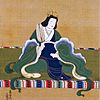 |
Empress Suiko 推古天皇 |
593–628 (35 years) |
Daughter of Emperor Kinmei. She was also the half-sister and wife of Emperor Bidatsu. She was the first female ruler who is not considered legendary. Prince Shōtoku helped her rule as her regent. |
| 34 |  |
Emperor Jomei 舒明天皇 |
629–641 (12 years) |
Grandson of Emperor Bidatsu and great-nephew of Empress Suiko. |
| 35 | 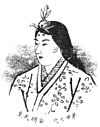 |
Empress Kōgyoku 皇極天皇 |
642–645 (3 years) |
Great-granddaughter of Emperor Bidatsu and wife of Emperor Jomei. This was her first time ruling. She gave up her throne because of the Isshi incident. |
| 36 |  |
Emperor Kōtoku 孝徳天皇 |
645–654 (9 years) |
Great-grandson of Emperor Bidatsu and younger brother of Empress Kōgyoku. He was the first emperor to have an official era name assigned to his reign. |
| 37 |  |
Empress Saimei 斉明天皇 |
655–661 (6 years) |
Older sister of Emperor Kōtoku. She had ruled before as Empress Kōgyoku. This was her second time ruling. |
| 38 | 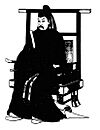 |
Emperor Tenji 天智天皇 |
662–672 (10 years) |
Son of Emperor Jomei and Empress Kōgyoku. |
| 39 |  |
Emperor Kōbun 弘文天皇 |
672 (8 months) |
Son of Emperor Tenji. He was removed from power and died by his own hand during the Jinshin War. He was not officially recognized as emperor until 1870. |
| 40 |  |
Emperor Tenmu 天武天皇 |
673–686 (14 years) |
Son of Emperor Jomei and Empress Kōgyoku, and younger brother of Emperor Tenji. He removed his nephew, Emperor Kōbun, from power during the Jinshin War. |
| 41 |  |
Empress Jitō 持統天皇 |
687–697 (10 years) |
Daughter of Emperor Tenji and wife of Emperor Tenmu. She gave up her throne. |
| 42 |  |
Emperor Monmu 文武天皇 |
697–707 (10 years) |
Grandson of Emperor Tenmu and Empress Jitō. |
| 43 | 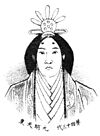 |
Empress Genmei 元明天皇 |
707–715 (8 years) |
Daughter of Emperor Tenji and half-sister of Empress Jitō. She was the mother of Emperor Monmu. She gave up her throne. |
| 44 |  |
Empress Genshō 元正天皇 |
715–724 (9 years) |
Daughter of Empress Genmei and older sister of Emperor Monmu. She was the only empress to inherit the throne directly from another empress. She gave up her throne. |
| 45 |  |
Emperor Shōmu 聖武天皇 |
724–749 (25 years) |
Son of Emperor Monmu and nephew of Empress Genshō. He gave up his throne. |
| 46 | 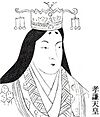 |
Empress Kōken 孝謙天皇 |
749–758 (9 years) |
Daughter of Emperor Shōmu. This was her first time ruling. She gave up her throne. |
| 47 |  |
Emperor Junnin 淳仁天皇 |
758–764 (6 years) |
Grandson of Emperor Tenmu and cousin of Empress Kōken. He was removed from power. He was later named emperor officially in 1870. |
| 48 |  |
Empress Shōtoku 称徳天皇 |
764–770 (6 years) |
She removed her cousin, Emperor Junnin, from power. She had previously ruled as Empress Kōken. This was her second time ruling. |
| 49 |  |
Emperor Kōnin 光仁天皇 |
770–781 (11 years) |
Grandson of Emperor Tenji and brother-in-law of Empress Shōtoku. He gave up his throne. |
Later Emperors and Important Periods (781 AD – Present)
This section covers emperors from the Heian period through modern times, including key historical events.
| No. | Portrait | Posthumous name | Reign | Key Facts |
|---|---|---|---|---|
| 50 | 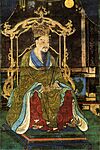 |
Emperor Kanmu 桓武天皇 |
781–806 (25 years) |
Son of Emperor Kōnin. |
| 51 |  |
Emperor Heizei 平城天皇 |
806–809 (3 years) |
Son of Emperor Kanmu. He gave up his throne. |
| 52 | 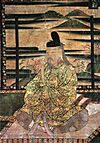 |
Emperor Saga 嵯峨天皇 |
809–823 (14 years) |
Son of Emperor Kanmu and younger brother of Emperor Heizei. He gave up his throne. |
| 53 | 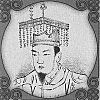 |
Emperor Junna 淳和天皇 |
823–833 (10 years) |
Son of Emperor Kanmu and younger brother of Emperor Heizei and Emperor Saga. He gave up his throne. |
| 54 |  |
Emperor Ninmyō 仁明天皇 |
833–850 (17 years) |
Son of Emperor Saga and nephew/adopted son of Emperor Junna. |
| 55 |  |
Emperor Montoku 文徳天皇 |
850–858 (8 years) |
Son of Emperor Ninmyō. |
| 56 | 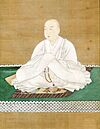 |
Emperor Seiwa 清和天皇 |
858–876 (18 years) |
Son of Emperor Montoku. He gave up his throne. |
| 57 | 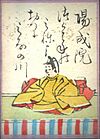 |
Emperor Yōzei 陽成天皇 |
876–884 (8 years) |
Son of Emperor Seiwa. He was removed from power by Fujiwara no Mototsune. |
| 58 |  |
Emperor Kōkō 光孝天皇 |
884–887 (3 years) |
Son of Emperor Ninmyō and great-uncle of Emperor Yōzei. He became emperor because Fujiwara no Mototsune suggested it. |
| 59 |  |
Emperor Uda 宇多天皇 |
887–897 (10 years) |
Son of Emperor Kōkō. He gave up his throne. |
| 60 | 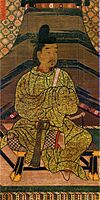 |
Emperor Daigo 醍醐天皇 |
897–930 (33 years) |
Son of Emperor Uda. He gave up his throne. |
| 61 |  |
Emperor Suzaku 朱雀天皇 |
930–946 (16 years) |
Son of Emperor Daigo. He gave up his throne. |
| 62 |  |
Emperor Murakami 村上天皇 |
946–967 (21 years) |
Son of Emperor Daigo and younger brother of Emperor Suzaku. |
| 63 |  |
Emperor Reizei 冷泉天皇 |
967–969 (2 years) |
Son of Emperor Murakami. He gave up his throne. |
| 64 |  |
Emperor En'yū 円融天皇 |
969–984 (15 years) |
Son of Emperor Murakami and younger brother of Emperor Reizei. He gave up his throne. |
| 65 |  |
Emperor Kazan 花山天皇 |
984–986 (2 years) |
Son of Emperor Reizei and nephew of Emperor En'yū. He gave up his throne. |
| 66 | 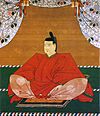 |
Emperor Ichijō 一条天皇 |
986–1011 (25 years) |
Son of Emperor En'yū. He gave up his throne. |
| 67 | 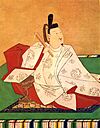 |
Emperor Sanjō 三条天皇 |
1011–1016 (5 years) |
Son of Emperor Reizei, half-brother of Emperor Kazan, and cousin of Emperor Ichijō. He gave up his throne. |
| 68 |  |
Emperor Go-Ichijō 後一条天皇 |
1016–1036 (20 years) |
Son of Emperor Ichijō and cousin of Emperor Sanjō. |
| 69 |  |
Emperor Go-Suzaku 後朱雀天皇 |
1036–1045 (9 years) |
Son of Emperor Ichijō and younger brother of Emperor Go-Ichijō. He gave up his throne. |
| 70 |  |
Emperor Go-Reizei 後冷泉天皇 |
1045–1068 (23 years) |
Son of Emperor Go-Suzaku. |
| 71 | 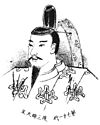 |
Emperor Go-Sanjō 後三条天皇 |
1068–1073 (5 years) |
Son of Emperor Go-Suzaku and half-brother of Emperor Go-Reizei. He gave up his throne. |
| 72 |  |
Emperor Shirakawa 白河天皇 |
1073–1087 (14 years) |
Son of Emperor Go-Sanjō. He gave up his throne. |
| 73 | 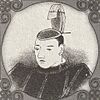 |
Emperor Horikawa 堀河天皇 |
1087–1107 (20 years) |
Son of Emperor Shirakawa. |
| 74 |  |
Emperor Toba 鳥羽天皇 |
1107–1123 (16 years) |
Son of Emperor Horikawa. Emperor Shirakawa made him give up his throne. |
| 75 | 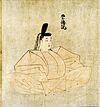 |
Emperor Sutoku 崇徳天皇 |
1123–1142 (19 years) |
Son of Emperor Toba. He gave up his throne. He tried to remove Emperor Go-Shirakawa from power during the Hōgen rebellion. |
| 76 | 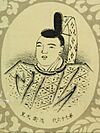 |
Emperor Konoe 近衛天皇 |
1142–1155 (13 years) |
Son of Emperor Toba and half-brother of Emperor Sutoku. |
| 77 |  |
Emperor Go-Shirakawa 後白河天皇 |
1155–1158 (3 years) |
Son of Emperor Toba, younger brother of Emperor Sutoku, and half-brother of Emperor Konoe. He gave up his throne. |
| 78 | 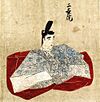 |
Emperor Nijō 二条天皇 |
1158–1165 (7 years) |
Son of Emperor Go-Shirakawa. He gave up his throne. |
| 79 | 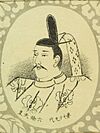 |
Emperor Rokujō 六条天皇 |
1165–1168 (3 years) |
Son of Emperor Nijō. Emperor Go-Shirakawa removed him from power. |
| 80 |  |
Emperor Takakura 高倉天皇 |
1168–1180 (12 years) |
Son of Emperor Go-Shirakawa, half-brother of Emperor Nijō, and uncle of Emperor Rokujō. Taira no Kiyomori forced him to give up his throne. |
| 81 |  |
Emperor Antoku 安徳天皇 |
1180–1185 (5 years) |
Son of Emperor Takakura. He died during the Battle of Dan-no-ura in the Genpei War. |
| 82 |  |
Emperor Go-Toba 後鳥羽天皇 |
1183–1198 (15 years) |
Son of Emperor Takakura and half-brother of Emperor Antoku. Emperor Go-Shirakawa made him emperor during the Genpei War. The Kamakura shogunate made the emperor a figurehead (a ruler with no real power). He gave up his throne. He tried to overthrow the Kamakura shogunate during the Jōkyū War. |
| 83 | 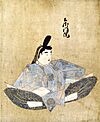 |
Emperor Tsuchimikado 土御門天皇 |
1198–1210 (12 years) |
Son of Emperor Go-Toba. Emperor Go-Toba convinced him to give up his throne. He was sent away after the Jōkyū War. |
| 84 | 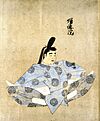 |
Emperor Juntoku 順徳天皇 |
1210–1221 (11 years) |
Son of Emperor Go-Toba and half-brother of Emperor Tsuchimikado. He was forced to give up his throne after the Jōkyū War. |
| 85 | 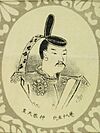 |
Emperor Chūkyō 仲恭天皇 |
1221 (2 months) |
Son of Emperor Juntoku. He was removed from power and sent away after the Jōkyū War. He was officially named emperor in 1870. |
| 86 | 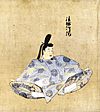 |
Emperor Go-Horikawa 後堀河天皇 |
1221–1232 (11 years) |
Grandson of Emperor Takakura and first cousin of Emperor Chūkyō. He gave up his throne. |
| 87 | 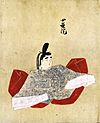 |
Emperor Shijō 四条天皇 |
1232–1242 (10 years) |
Son of Emperor Go-Horikawa. |
| 88 | 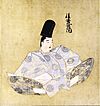 |
Emperor Go-Saga 後嵯峨天皇 |
1242–1246 (4 years) |
Son of Emperor Tsuchimikado and second cousin of Emperor Shijō. He gave up his throne. |
| 89 |  |
Emperor Go-Fukakusa 後深草天皇 |
1246–1260 (14 years) |
Son of Emperor Go-Saga. He was from the Jimyōin family line. He gave up his throne because Emperor Go-Saga insisted. |
| 90 | 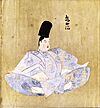 |
Emperor Kameyama 亀山天皇 |
1260–1274 (14 years) |
Son of Emperor Go-Saga and younger brother of Emperor Go-Fukakusa. He was from the Daikakuji family line. He gave up his throne. |
| 91 | 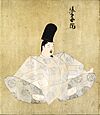 |
Emperor Go-Uda 後宇多天皇 |
1274–1287 (13 years) |
Son of Emperor Kameyama. He was from the Daikakuji family line. Emperor Go-Fukakusa forced him to give up his throne. |
| 92 |  |
Emperor Fushimi 伏見天皇 |
1287–1298 (11 years) |
Son of Emperor Go-Fukakusa. He was from the Jimyōin family line. He gave up his throne. |
| 93 | 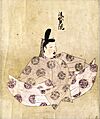 |
Emperor Go-Fushimi 後伏見天皇 |
1298–1301 (3 years) |
Son of Emperor Fushimi. He was from the Jimyōin family line. The Daikakuji family line forced him to give up his throne. |
| 94 | 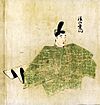 |
Emperor Go-Nijō 後二条天皇 |
1301–1308 (7 years) |
Son of Emperor Go-Uda. He was from the Daikakuji family line. |
| 95 |  |
Emperor Hanazono 花園天皇 |
1308–1318 (10 years) |
Son of Emperor Fushimi. He was from the Jimyōin family line. He agreed that the Daikakuji and Jimyōin families would take turns ruling. |
| 96 | 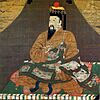 |
Emperor Go-Daigo 後醍醐天皇 |
1318–1339 (21 years) |
Son of Emperor Go-Uda and younger brother of Emperor Go-Nijō. He was from the Daikakuji family line. The Kamakura shogunate ended during the Genkō War. He briefly ruled Japan directly during the Kenmu Restoration. He was against the Ashikaga shogunate. He became the first emperor of the Southern Court. |
| 97 | 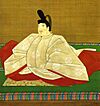 |
Emperor Go-Murakami 後村上天皇 |
1339–1368 (29 years) |
Son of Emperor Go-Daigo. He was the second emperor of the Southern Court. The Southern Court briefly took Kyoto, the Northern Court's capital, during the Kannō disturbance. |
| 98 |  |
Emperor Chōkei 長慶天皇 |
1368–1383 (15 years) |
Son of Emperor Go-Murakami. He was the third emperor of the Southern Court. He gave up his throne. |
| 99 | 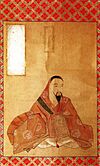 |
Emperor Go-Kameyama 後亀山天皇 |
1383–1392 (9 years) |
Son of Emperor Go-Murakami and younger brother of Emperor Chōkei. He was the fourth and last emperor of the Southern Court. He agreed to make peace with the Northern Court and gave up his throne to the Northern Court's line. |
| 100 |  |
Emperor Go-Komatsu 後小松天皇 |
1392–1412 (20 years) |
Son of Emperor Go-En'yū. He was the sixth and last emperor of the Northern Court from 1382 to 1392. He became the official emperor after Emperor Go-Kameyama gave up his throne. He agreed that the Northern and Southern Courts would take turns ruling. All emperors after him are from the Northern line. |
| 101 |  |
Emperor Shōkō 称光天皇 |
1412–1428 (16 years) |
Son of Emperor Go-Komatsu. |
| 102 | 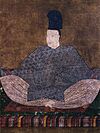 |
Emperor Go-Hanazono 後花園天皇 |
1428–1464 (36 years) |
Great-grandson of Northern Emperor Sukō and third cousin of Emperor Shōkō. He gave up his throne. |
| 103 |  |
Emperor Go-Tsuchimikado 後土御門天皇 |
1464–1500 (36 years) |
Son of Emperor Go-Hanazono. The Ōnin War started during his reign, which led to the beginning of the Sengoku period. |
| 104 | 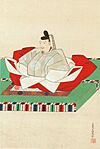 |
Emperor Go-Kashiwabara 後柏原天皇 |
1500–1526 (26 years) |
Son of Emperor Go-Tsuchimikado. The emperor's power under the Ashikaga shogunate was at its weakest during his rule. |
| 105 |  |
Emperor Go-Nara 後奈良天皇 |
1526–1557 (31 years) |
Son of Emperor Go-Kashiwabara. |
| 106 |  |
Emperor Ōgimachi 正親町天皇 |
1557–1586 (29 years) |
Son of Emperor Go-Nara. The Ashikaga shogunate was overthrown by Oda Nobunaga. He gave up his throne. |
| 107 |  |
Emperor Go-Yōzei 後陽成天皇 |
1586–1611 (25 years) |
Grandson of Emperor Ōgimachi. The Tokugawa shogunate was started during his reign, and the Sengoku period ended. |
| 108 |  |
Emperor Go-Mizunoo 後水尾天皇 |
1611–1629 (18 years) |
Son of Emperor Go-Yōzei. Japan started its isolationist policy (closing itself off from the world) during his time. An event called the Purple Robe Incident led to him giving up his throne. |
| 109 | 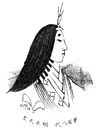 |
Empress Meishō 明正天皇 |
1629–1643 (14 years) |
Daughter of Emperor Go-Mizunoo. She gave up her throne. |
| 110 |  |
Emperor Go-Kōmyō 後光明天皇 |
1643–1654 (11 years) |
Son of Emperor Go-Mizunoo and younger brother of Empress Meishō. |
| 111 |  |
Emperor Go-Sai 後西天皇 |
1655–1663 (8 years) |
Son of Emperor Go-Mizunoo and younger half-brother of Empress Meishō and Emperor Go-Kōmyō. He gave up his throne. |
| 112 |  |
Emperor Reigen 霊元天皇 |
1663–1687 (24 years) |
Son of Emperor Go-Sai. He gave up his throne. |
| 113 |  |
Emperor Higashiyama 東山天皇 |
1687–1709 (22 years) |
Son of Emperor Reigen. He gave up his throne. |
| 114 |  |
Emperor Nakamikado 中御門天皇 |
1709–1735 (26 years) |
Son of Emperor Higashiyama. He gave up his throne. |
| 115 | 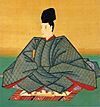 |
Emperor Sakuramachi 桜町天皇 |
1735–1747 (12 years) |
Son of Emperor Nakamikado. He gave up his throne. |
| 116 | 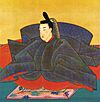 |
Emperor Momozono 桃園天皇 |
1747–1762 (15 years) |
Son of Emperor Sakuramachi. He gave up his throne. |
| 117 |  |
Empress Go-Sakuramachi 後桜町天皇 |
1762–1771 (9 years) |
Daughter of Emperor Sakuramachi and younger sister of Emperor Momozono. |
| 118 | 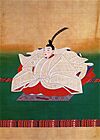 |
Emperor Go-Momozono 後桃園天皇 |
1771–1779 (8 years) |
Son of Emperor Momozono and nephew of Empress Go-Sakuramachi. |
| 119 |  |
Emperor Kōkaku 光格天皇 |
1780–1817 (37 years) |
Great-grandson of Emperor Higashiyama and cousin/adopted son of Emperor Go-Momozono. He gave up his throne. |
| 120 | 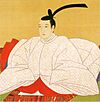 |
Emperor Ninkō 仁孝天皇 |
1817–1846 (29 years) |
Son of Emperor Kōkaku. |
| 121 |  |
Emperor Kōmei 孝明天皇 |
1846–1867 (21 years, 0 days) |
Son of Emperor Ninkō. He ruled during the Bakumatsu period, when Japan ended its isolationist policy and changed from Tokugawa rule to Imperial rule. He was the last emperor to have multiple era names during his reign. |
| 122 | 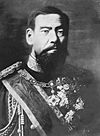 |
Emperor Meiji 明治天皇 |
3 February 1867 – 30 July 1912 (45 years, 178 days) |
Son of Emperor Kōmei. He ended the Tokugawa Shogunate with the Meiji Restoration (January 3, 1868). He was the first emperor of the Empire of Japan. |
| 123 | 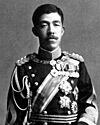 |
Emperor Taishō 大正天皇 |
30 July 1912 – 25 December 1926 (14 years, 148 days) |
Son of Emperor Meiji. During the Taishō Democracy, political power moved from the old leaders (genrō) to the Imperial Diet and political parties. His oldest son, Crown Prince Hirohito, served as his Sesshō (Regent) from 1921 to 1926 because Emperor Taishō was ill. |
| 124 |  |
Emperor Shōwa 昭和天皇 |
25 December 1926 – 7 January 1989 (62 years, 13 days) |
Son of Emperor Taishō. He served as Sesshō (Regent) from 1921 to 1926. He was the last emperor of the Empire of Japan. His reign included World War II and Japan's amazing post-war economic growth. |
| 125 | 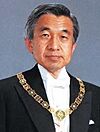 |
Emperor Heisei 平成天皇 |
7 January 1989 – 30 April 2019 (30 years, 113 days) |
Son of Emperor Shōwa. He gave up his throne and is now called Jōkō (Emperor Emeritus). |
| 126 | 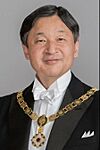 |
Emperor Reiwa 令和天皇 |
1 May 2019 – present (6 years, 232 days) |
Son of Emperor Heisei. He is known as Kinjō Tennō (the Reigning Emperor) or Tennō Heika (His Majesty the Emperor). |
People Recognized as Emperors Later
This is a list of people who were not emperors during their lives but were later given the title of Japanese emperor after they died.
| Portrait | Posthumous name | Year Recognized | Key Facts |
|---|---|---|---|
 |
Emperor Oka 岡宮天皇 |
759 | Son of Emperor Tenmu. He was the husband of Empress Genmei and father of Emperor Monmu and Empress Genshō. He was made crown prince in 681 but died before he could become emperor after Emperor Tenmu's death. |
 |
Emperor Sudōjinkei 崇道尽敬皇帝 |
759 | Son of Emperor Tenmu and half-brother of Prince Kusakabe. He was the father of Emperor Junnin. |
 |
Emperor Kasuga 春日宮天皇 |
770 | Son of Emperor Tenji and half-brother of Emperor Tenmu, Empress Jitō, Empress Genmei, and Emperor Kōbun. He was the father of Emperor Kōnin. |
 |
Emperor Sudō 崇道天皇 |
800 | Son of Emperor Kōnin and younger brother of Emperor Kanmu. He was made crown prince in 781. He was thought to be involved in the killing of Fujiwara no Tanetsugu. He died while being sent away. |
 |
Cloistered Emperor Yōkō 陽光院 |
Unknown | Son of Emperor Ōgimachi and father of Emperor Go-Yōzei. Emperor Go-Yōzei recognized him as emperor after his death. |
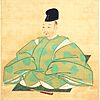 |
Emperor Kyōkō 慶光天皇 |
1884 | Grandson of Emperor Higashiyama and father of Emperor Kōkaku. |
Images for kids
See also
 In Spanish: Anexo:Emperadores de Japón para niños
In Spanish: Anexo:Emperadores de Japón para niños
- Emperor of Japan
- Empress of Japan
- Sesshō and Kampaku
- Shogun
- Prime Minister of Japan
- Family tree of Japanese monarchs
- Empress Tsunuzashi






